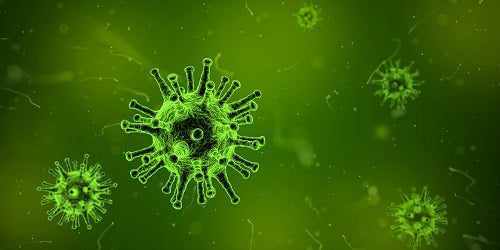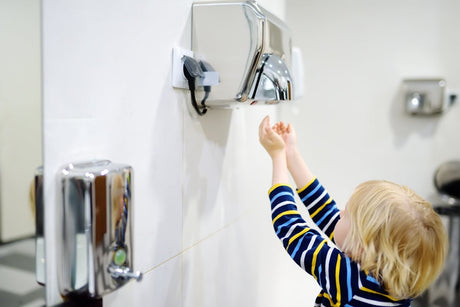Coronavirus Covid-19 is highlighting the already prevalent disease that exists in modern life, the disease of misinformation being disseminated on social media. We are all being bombarded with fake advice that is created to push a commercial or unpleasant agenda. The originators are paid to produce the content and then the people that spread the news are often unwittingly doing so, believing they are passing on helpful advice. I was recently guilty of doing so myself, before I thought twice and began fact checking. The type of information can seem so convincing and the sources so reliable. The situation is made worse by our time poor lives, so if it comes from a friend we trust, we just forward.
Now more than ever, we need trusted sources to go to. The likes of the World Health Organisation, government websites and the Centres for disease control and infection go should be the go-to places for advice for Covid-19. Even the seemingly credible online media often take a story published elsewhere and run with it without fact checking or produce an alarming headline that doesn’t match with the reality of the science.
World Health Organisation’s standards:
“to protect yourself against the new coronavirus, you should frequently clean your hands with an alcohol-based hand rub or wash them with soap and water. Once your hands are cleaned, you should dry them thoroughly by using paper towels or a warm air dryer.”
The Centers for Disease Control & Prevention (CDC), WHO and scientists at John Hopkins University have all categorically confirmed this week the hand dryers do not spread coronavirus. In fact, all independent studies not conducted or funded by the paper towel or hand dryer industries over the last 30 years have shown that there is no significant difference in the hygiene between paper towel use and hand dryers (see references below)
The Paper Towel Industry claims
The paper towel industry spends 100’s of millions a year on devising a PR strategy and then paying for scientific studies that support the PR. This science can seem credible but the devil is in the detail or in the lack of it. The World Health Organisation and CDC have both categorically said that Hand Dryers are a safe means of during your hands and stressed the importance of proper washing and drying to reduce transmission.
The paper towel industry has been attacking hand dryers for almost 40 years. These are some of the claims they have made.
1. Initially they said that they blow bacteria onto the hands.
FACT CHECK
All independent studies have shown there to be no significant difference in hand hygiene using either a paper towel or electric hand dryer. This is whether using a traditional style hand dryer or modern jet hand dryer. So, the paper towel industry changed its angle of attack.
2. Hand dryers are too slow so you are less likely to dry your hands
FACT CHECK
Go back 20 years this might have been the case but modern dryers are now as fast as using a paper towel to thoroughly dry hands. I am not talking a quick wipe, I am talking about getting in between your fingers, under your nails etc. Many hand dryers don’t require you to rub your skin so there is no chance on removing bacteria and depositing it somewhere else on your hands. With a paper towel it is easy to rub and reapply. As new machines with NSF and HACCP approved accreditation for the highest hygiene standards have come on the market, the paper industry has again changed its attack.
3. Hand dryers blow and spread more bacteria around the room
FACT CHECK
This seems logical and intuitive. Indeed, bacteria is all around us, if you pass 50-100 times more air there will be 50-100 times more bacteria. This is all that paper towel funded research showed. This can make for a great headline!
They did NOT show that it changed hand hygiene at all. They managed to capture more bacteria in a petri dish underneath the dryer but this is simply down to more air passing over it. No paper towel funded research has shown that drying with air deposits bacteria on the hands. They did show that bacteria spread onto walls and floors however. Let’s think about the reality of this, do you touch the floor or wall with your hands or mouth?
Hopefully the answer is no.
On the other hand, pardon the pun, when you use a paper towel dispenser, how often do you touch the inside of the dispenser trying to get another paper towel out? Probably more than you think so imagine the opportunity for cross contamination!
Worse still there is no paper so you use toilet paper or walk out with wet hands? Wet hands are one of the biggest transmitters of infection, depositing droplets on everything you subsequently touch.
Toilet paper is the worst thing you could dry your hands with as its touched after you have been to the toilet, is close to the toilet flush and is used pre-washing the hands so its one of the most infectious locations in the washroom.
The reality is that both methods are safe if available and used properly.
3. If you haven’t washed your hands properly bacteria and viruses could leap off the hands and aerosolise
FACT check
Studies have only shown that bacteria were located on walls, the floor and on the hand dryer. Again, you do not touch any of these locations during a visit to the bathroom, so how significant is this. The paper towel PR has inferred that the bacteria is aerosolised to travel this far. Again, despite the millions spent they did not prove this, no significant residual amounts of bacteria were shown in the air after the dryer was in use, there were comparable levels with the rest of the washroom. If someone failed to wash their hands properly, the residual bacteria is transferring in the water, this is no different from the bacteria that would be found underneath the paper towel dispenser, on the wet paper towels or the drips on the floor on around the sink.
FIRSTLY, WASH your hands properly. Secondly, think about the reality of the information. Its easier to say 50 x more bacteria were found in location x but what are you comparing it to. Interesting the study didn’t measure the inside of the paper hand towel dispenser or around the bin where the towels are deposited. What matters is what are you more likely to touch? The paper towel industry has only ever shown low levels of bacteria in comparison with the bacteria found on everyday objects and never in any areas that are significant to transmission. Yet the headlines would have you believe something quite different and the fact they appear in quite credible publications shows you the state of online media, where freelancers and time poor journalists just fill their pages with poorly researched, rehashes of other people’s work. I strongly suggest you look at the debunking article which compiles all the major news stories, including from credible resources like the Harvard journal where the headline bears no comparison with the conclusion. Everyone wants click!
Summary
Despite the paper industry having billions behind it, they have only succeeded in creating some scaremongering PR, nothing conclusive at all. Thin about it, billions at stake and still nothing conclusive, only unrealistic PR driven research. The WHO and CDC still recommending either.
It is really important we don’t lose site of the advantages of hand dryers.
Paper towels require millions of trees to be cut down using carbon intensive machinery, massive amounts of fertiliser and water. Eco-systems are destroyed. Then a huge amount of transport is required to move wood across the globe, then huge energy and chemical inputs are needed to create the products, then further transportation and warehousing is needed, then they are disposed of as contaminated waste into landfill or incinerator. The cycle begins again. They might be sometimes made of recycled material but only a fraction is and they are not remade into paper towels but cheaper grades of paper which often requires BPA and inking.
WHO estimate 7 million people a year die from air-pollution. When coronavirus Covid 19 is brought under control, we will still have that problem and reverting back to carbon intensive industries is not helpful.
Independent studies (Not commissioned by the hand dryer or paper towel industry) see below:
Resume of relevant conclusions found in studies Paper-Dryers





